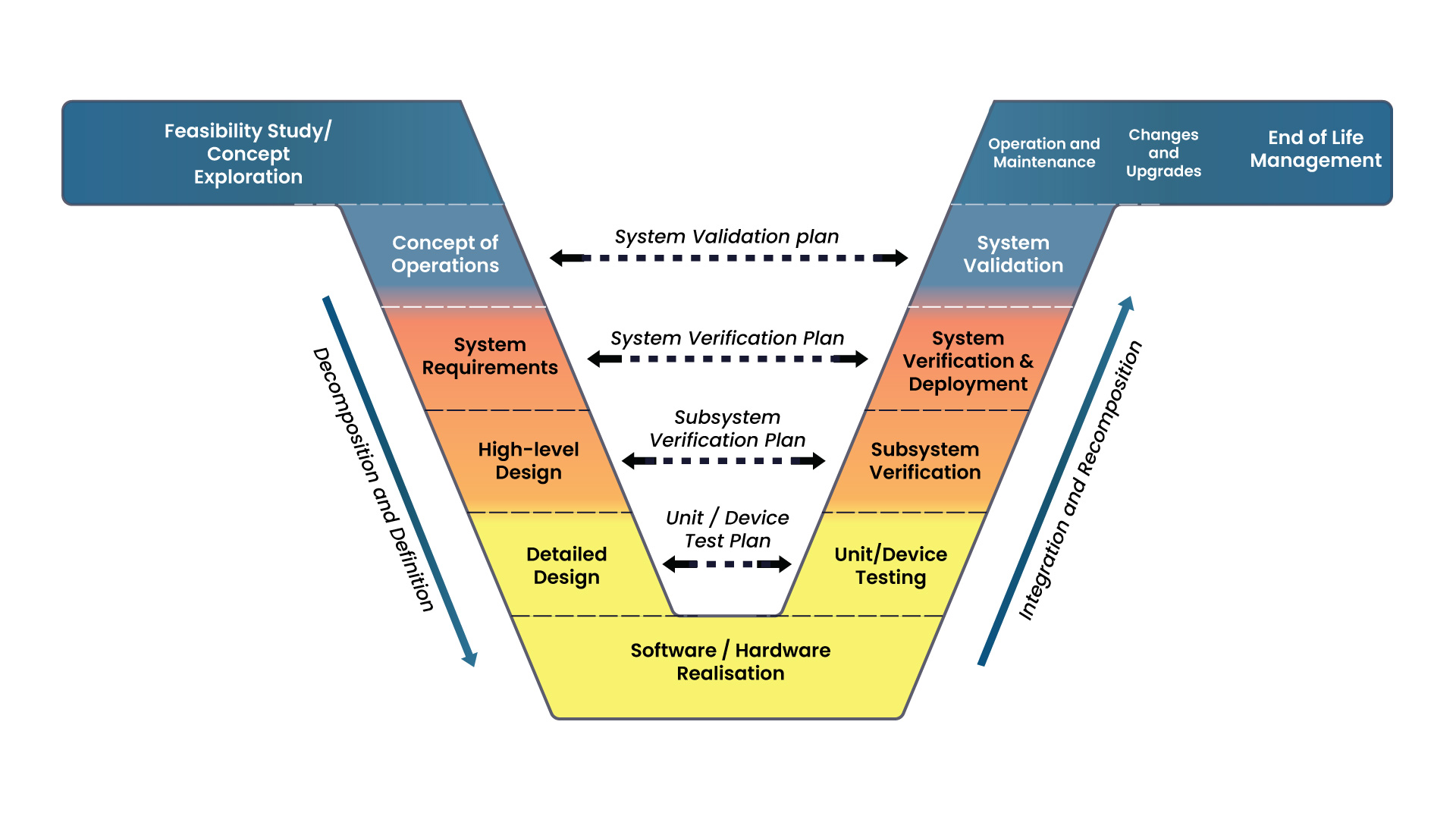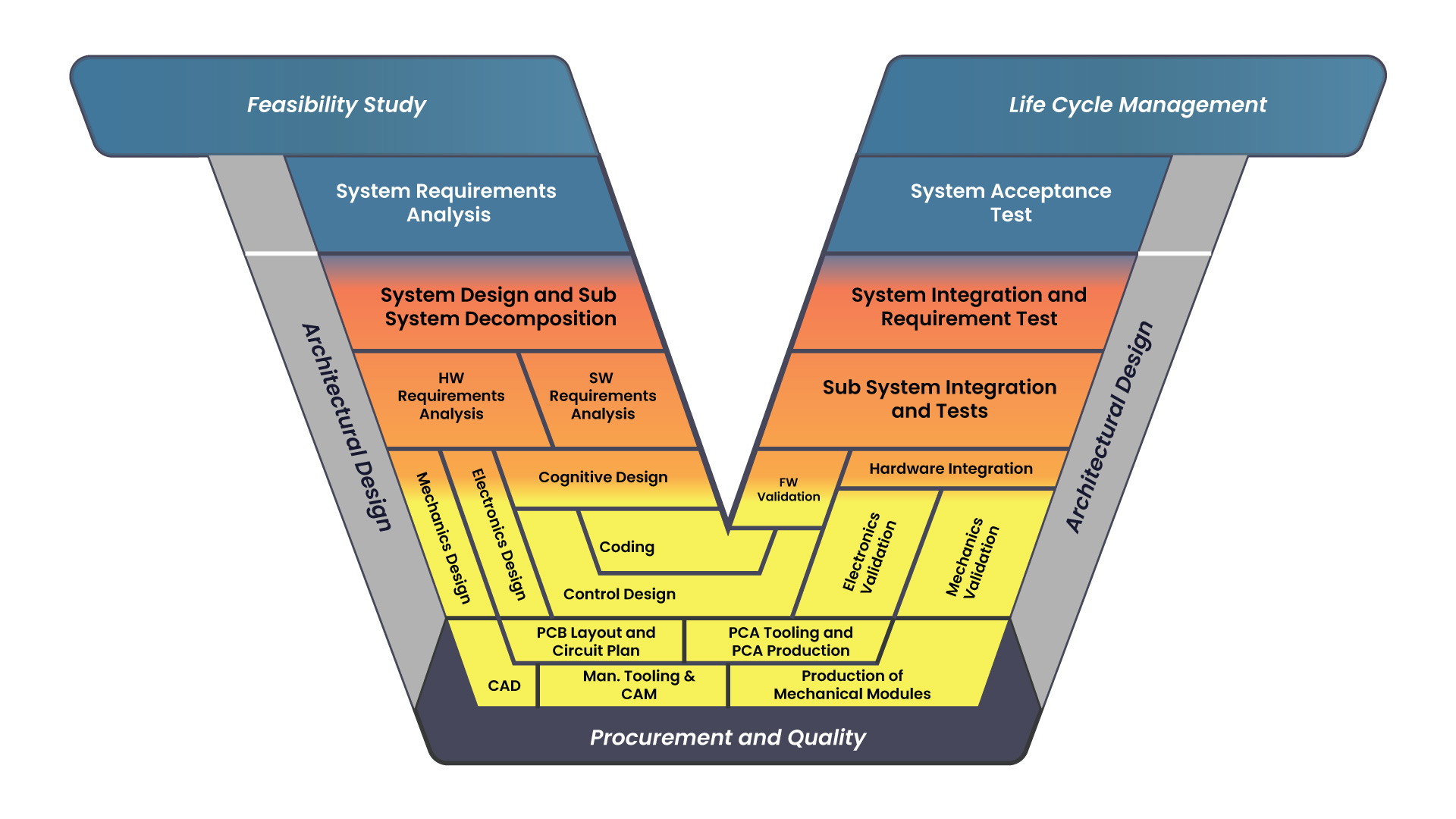Design & Engineering
The region of Eindhoven, stretching from Leuven in Belgium and into Germany is the most innovative technology region in Europe. Over 5000 High Tech and IT companies work together. And in the Benelux and Nordrhein-Westfalen numerous manufacturers are in constant search of technological innovation.
These high tech companies cooperate and continuously develop for maintaining a leading role globally. And the ability to do so -the ecosystem- depends on co-development and partnerships: OEM’s, ODM’s, technology designers.
Manufacturers in general are far more on their own, in their need of transforming their production i.e. technological innovation and improvement.
The need and urge to develop and innovate is because both are continuously confronted with increasing and developing customer demands, strong competition, technological leadership, a general need for innovation, scaling up, higher added value, costs and price reductions, improving effectivity, efficiency and OEE, dealing with a tight labor market and strained availability of competences. They want their focus on the core of their business instead of trying to keep everything in check.
Significant opportunities present themselves in dealing with these dynamics and challenges, by way of co-development, co-partnership, outsourcing. Among others companies are driven by their needs for:
- Assessment, pain/gain analysis, conceptual redesign and business case building of existing production (equipments);
- Focus on Cost of Goods (CoG). Aiming at lowering costs, increasing quality of -for example- subsystems;
- Quality improvements of design and use of materials. Too often Hold Points occur in less than the ideal circumstances of design/prototyping, for example in production;
- Technological knowhow, where the core business is defining innovative functions and products, market development and business case definition, but with lacking technological and design knowhow. Design to function, roadmap, strategy;
- Preventive maintenance or precautionary improvements to extend the operational life-time of a machine or tool in a controlled/scheduled approach.
- End of Life/LCM redesign in case of continuing market demand but discontinued components;
- Scaling up, improving availability and capacity. Market dynamics demand continuous equipment capacity improvement: refined and stricter specifications, downsizing components, speeding up throughput;
- Time to Market. Co-developing to accelerate development: resources, competences and knowhow;
- Outsourcing responsibility. Exchanging input driven and supportive external services by responsibility and result driven services and solutions to obtain a far better cost and impact performance;
- Beating low cost manufacturing markets by high value/high performance design and build, based on best of class project management, effectivity and efficiency, competence management, best practices, toolsets, knowhow and experience;
- Life Cycle Management/LCM, i.e. outsourcing cradle to cradle solutions: concept to end of life;
- End to End solutions: concept, design, build, maintain, including service and spare parts agreements. A common demand in tooling;
- Industrialization, design for technology, manufacturing, costs, maintainability, reliability, etc. Feasibility study and concept exploration (derisk model); analyzing and defining requirements; prototypes with proven functionality, proven concept; conversion of the functional model to manufacturability.
Co-development, co-partnerships and outsourcings in general act on different possible levels of responsibility, depending on the customer’s needs and the customer’s and partners abilities.
We at PDM support our customers in designing complete systems, subsystems, components, software and other tailored solutions. We use a multidisciplinary approach, combining expertise in electromechanical, mechanical, electrical, electronic, software and system engineering.
A core competence is that we take responsibility in project management, the ability to manage a co-development or partnership, and to deliver results. Taking responsibility in all phases of the design process, including prototyping and manufacturing specialties as visualized in the well-known V-model for system design.
PDM uses the associated expertise in the consecutive phases of the design process, as visualized in the overview of expertise.
Starting with requirements, we apply our expertise in system requirements analysis, system design and sub system decomposition, hardware and software requirements analysis.
We then create the mechanical and electronic designs incl. CAD, PCB layouts and circuit plans. From the cognitive design we realise the SW control designs and coding.
In the next phases, the mechanical, electrical parts/modules and electronics are produced and assembled, directly followed by electronics, mechanics and firmware validation on sub part level. The design process is completed by integration and testing, which includes hardware integration, sub system integration and tests, system integration and requirement tests and system acceptance test.
Furthermore, we use an overarching architectural design and we take costs, quality & life cycle into account throughout the entire design process. Even after the final part, system or equipment has been put into service, we continue to support our customers and implement changes and upgrades where necessary.

